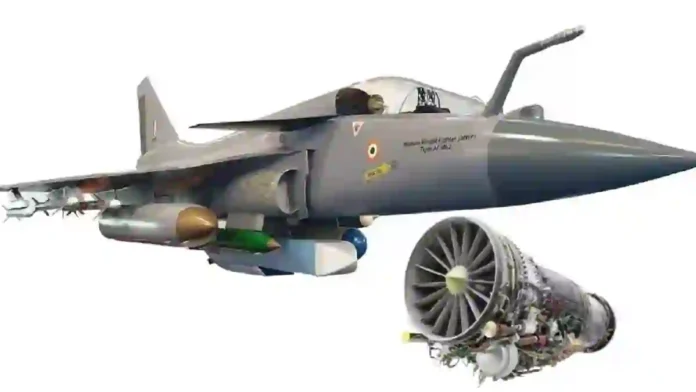India is making a significant leap toward self-reliance in fighter jet engine technology as Godrej Aerospace pushes the development of an indigenous 90 kN engine intended to power the TEJAS MK-2 and support the future Advanced Medium Combat Aircraft (AMCA).
This initiative addresses India’s long-standing dependence on foreign engines like the GE F404 and F414, which have hindered the growth and operational independence of its fighter programs due to supply chain vulnerabilities and geopolitical risks.
Read- HAL Likely To Complete Final Weapons Firing Tests of TEJAS MK-1A Fighter By September
Godrej Aerospace advocates a “spiral development” strategy, an incremental approach that first produces a 90 kN engine suitable for the TEJAS MK-2 before scaling up to the more powerful 110–120 kN engine required for the AMCA.
This approach mirrors the successful engine development paths of global aerospace leaders, aiming to build a robust knowledge ecosystem and progressively overcome technological challenges rather than risking an unsustainable leap from lower to high thrust engines.
Located in Khalapur, Godrej’s ₹500 crore advanced facility is a key contributor to India’s propulsion ecosystem. With expertise in manufacturing critical components such as turbine modules, single-crystal blades, and thermal coatings, Godrej is already integral to ongoing projects like the Kaveri derivative engines and collaboration with the Defence Research and Development Organisation (DRDO). Their role is pivotal in transitioning India from reliance on imported engines to a sustainable indigenous supply.
The TEJAS MK-2 itself represents a strategic upgrade over its predecessor, featuring capabilities such as Mach 1.8+ speeds, extended range of 3,000 km, reduced radar signature through stealth design features, sophisticated avionics including the indigenous Uttam AESA radar, and an AI co-pilot for enhanced pilot decision-making.
Read- ARDE Reportedly Developing Advanced Gatling Gun System For The Indian Army And Air Force
The indigenous 90 kN engine would power over 180-200 aircraft of this model, significantly cutting dependence on imports for the Indian Air Force (IAF).
This engine development also has broader strategic and economic implications. The IAF currently operates around 31 squadrons against a sanctioned strength of 42, creating a critical capability gap amid rising regional threats.
With plans to procure nearly 450 fighter jets in the coming years, rapid local engine production could alleviate squadron shortages while saving billions of dollars by avoiding costly imports, which average $8–10 million per engine. This financial and operational independence is critical to India’s long-term defence modernisation strategy.
The timeline for this indigenous engine aligns with the evolving TEJAS MK-2 program, whose first prototype is slated for rollout by the end of 2025 and full production expected by 2029 under Hindustan Aeronautics Limited (HAL).
India’s broader aero-engine roadmap envisions the 90 kN engine as a foundational stepping stone toward the future AMCA’s 5th-generation jet propulsion needs, aiming ultimately for a 120 kN engine developed through collaborations including international partnerships.
Thus, Godrej’s 90 kN engine initiative not only powers the next generation of Indian fighter aircraft but also ignites a vital propulsion technology ecosystem that is critical for India’s strategic self-reliance in military aviation.
Agency




